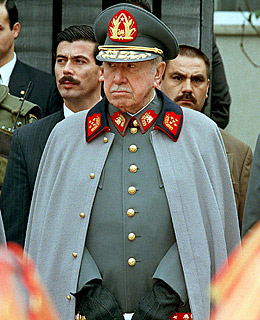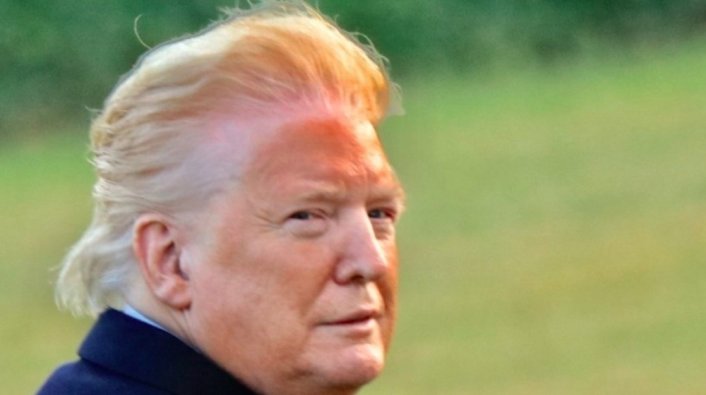Let’s be clear: if Trump is not politically killed off once and for all, he will become a MAGA Dracula, rising from the dead to haunt US politics for years to come and giving inspiration to his wretched family of grifters and thousands of deplorables well into the next decade. So what is needed now is a stake in his black heart, or a silver bullet, so long as whatever the means employed, it kills the beast.
The process of doing so is more akin to cancer surgery than supernatural intervention, but before proceeding to the discussion let me explain why Trump’s political death sentence is recognised as necessary.
The Democrats know what he is so I shall not discuss the logics by which they came to the conclusion that he needs to be extirpated from the body politic. It is the Republicans who are decisive here. They–by that I mean the Republican National Committee, US congressional delegations, state governments and legislatures, and the corporate interests that influence and fund Republican causes and candidates–have to come to grips with simple facts.
Trump was never a “true” Republican. Not only is he not a blue-blood old monied elite with stakes in traditional Republican ventures like oil, automobiles and finance. He was not a member of the party until he switched allegiance in 2010. From the get-go, his politics have been more of the George Wallace meets Barry Goldwater type rather than of the Nixon-Reagan-Rockefeller variant. His victory in the 2016 presidential primaries was a slap in the face by an upstart vulgarian to the Republican establishment, which he then proceeded to eviscerate by using their own opportunism against them. He offered the GOP “family” tax breaks, deregulation, a return to Anglo-Saxon heterosexist patrirachical Christian values and shirt-sleeve patriotism. They responded with political support. That support was contingent on his staying in his lane and understanding the limits on his authority and the boundaries of his power.
He did not. Instead, he picked needless fights at home and abroad over matters both inconsequential and important. He alienated allies and he cultivated American enemies. Rather than work to heal old wounds he picked the scab of racism and bigotry until it festered and burst into the public square in places like Charlottesville, Portland and Kenosha (the last two where he joined rightwing conspiracists in claiming that Black Lives Matter protests over the murder of unarmed black men by police were an Antifa-Socialist plot).
Meanwhile, he drove a wedge within the GOP by forcing out non-MAGA types and replacing them with national-populists who would do his bidding. That fractured the Republicans, and yet the marriage of convenience between the GOP establishment and Trump continued until 2020. However, at that point his erratic behaviour and incompetent, some might say delusional approach to the Covid-19 crisis turned a bad situation into a world-leading case study in governmental dysfunction. He turned a public health crisis into an internecine ideological war about masks and lockdowns. He refused to listen to scientists and increasingly relieved on conspiracy theorists for advice on the pandemic and more. In doing so he became bad for business even as the financial markets remained optimistic that at some point he would come to his senses.
He did not. He ran a dog-whistling re-election campaign marked by Covid super-spreader rallies. He impugned the integrity of the electoral process months before the vote was held. He tried to manipulate votes by filling the US Postal Service with partisan hacks who attempted to suppress absentee (mail-in) ballots by reducing collection points and sorting facilities. He urged Republican state election officials to challenge minority voting rights and to limit access to voting facilities in areas that traditionally went Democratic on Election Day. He did everything in his power to tip the scales, skew the results and delegitimise any outcome other than his win.
He lost anyway. Not by hundreds of thousands or a few million votes. He lost by nearly 8 million votes. It is true that he garnered 74 million votes himself, but that was on the back on the highest voter turn out in over a century (60.66 percent). Joe Biden won close to 82 million votes, so in the end even with those 74 million votes cast for Trump, the race was not close.
Rather than concede gracefully, Trump well and truly jumped out of his lane. He denounced without evidence fraud in the electoral system and specifically those in contested swing states. He spoke of dark forces operating behind the scenes to cheat him out of his rightful victory. He decried foreign (but non- Russian) interference. He mounted over sixty specious legal challenges to the results in several states, losing all but one of them. And then he crossed the biggest line of all: he incited a seditious insurrectionary attack on the US Capitol in order to prevent the Electoral College results from being certified by Congress. People were killed and injured in the mass assault and occupation of the Legislative branch. Politicians were forced to flee for their lives and take cover as the mob swarmed the debating chamber and halls baying for blood. And rather than appeal for calm, Trump watched it unfold on TV.
Whether they recognise it or not, that was the point when he crossed a Republican bridge too far. The assault on the Capitol was aimed not just at Democrats but at Republicans as well (people chanted “Hang Mike Pence,” among other niceties). In the days leading up to, during and after the siege, Republican lawmakers were harassed and threatened in public spaces, social media and via personal communications (including Mitt-Romney (R-UT) and Lyndsey Graham (R-SC), as were Democrats (House Speaker Nancy Pelosi (D-CA) and congresswoman Alexandria Ocasio Cortez (D-NY) were singled out for particularly violent misogynistic abuse). The attack may have been originally driven by partisan rage stoked by Trump and his minions, but became a broad-brushed assault on an institutional pillar of the American Republic.
Because many of the insurrectionists were wrapped in body armour and armed with blunt and other street-level weapons like Mace and bear spray (there were also firearms and explosives cached near the Capitol), which they used to fight sworn law enforcement officers defending the complex, the assault was an attack on the sovereignty of the US government itself. That is because one of the foundations of sovereignty–the core of what it is to be a “sovereign”–is legal monopoly over organised violence within defined territorial limits (the definition is from Max Weber but the origins of the notion of sovereignty as having a coercive core dates back to Thomas Hobbes).
It has now been established that, cloaked by the larger crowd who attended the Trump “Stop the Steal” rally and then walked to the capitol after Trump urged them to, members of various militias were acting in a coordinated fashion to the extent that some used walkie-talkies and their phones to organise aspects of the attack such as blocking the underground tunnels below the Capitol that are used as escape routes for congresspeople in times of crisis. Once they violently engaged the Capitol and DC Police on the steps and interior of the legislature, they challenged the sovereignty of the Federal Government and the components parts of its repressive apparatus.
For any nation-state, much less a supposed superpower, that cannot stand. Regardless of partisan orientation, no individual is above the Institution. As the saying goes, the Nation is one of laws, not people. Sovereignty cannot be contested because if it does, the Republic is at risk. The State is sacrosanct so long as it performs its core functions.
That is why Trump must be excised. He has undermined the basic foundations of the constitutional Republic and thereby challenged fundamental notions of the US as a sovereign State. He has divided the Nation and manipulated his supporters into becoming a riotous seditious mob. He has put himself before God, Flag and Country even while wrapping himself in them.
If not in public, in their hearts Republicans know this.
Removal of Trump’s malignant political presence is a three step process. One is via his Senate trial and banishment, one involves the prosecution and punishment of his seditious supporters, and one is a form of legal chemotherapy that will hopefully prevent him from returning to the political scene. This is what needs to happen. It does not mean that it will happen. We can only be hopeful.
Senate Minority Mitch McConnell (R-KY) seems to understand the situation. With his bleating about “rigged” elections in Georgia, Trump contributed to the GOP losing both Senate seats in that state (to a Jew and an African-American!). That cost McConnell his majority leadership. He now has an incentive to see Trump finished off because among other things it will pull the rug out from under and bring to heel would-be pretenders to the MAGA throne like Marco Rubio, Ted Cruz and Josh Hawley.
The impeachment charge against Trump is incitement of the attack. In asking for two extra weeks for Trump’s lawyers to “prepare, ” McConnell may in fact be giving Democrats more time to uncover irrefutable evidence that the Trump White House colluded with insurrectionists on how to storm the Capitol. The New York Times and Wall Street Journal have uncovered evidence that some of the “rioters” were paid staff on Trump’s campaign and were in contact with members of Trump’s entourage, including family members and people like Rudy Giuliani. With the articles of impeachment now tabled, more evidence may be uncovered before the Senate court proceedings begin. People can be subpoenaed to testify under oath or offered immunity in exchange for their testimony. Unlike his first impeachment, Trump cannot offer presidential protection to those called as witnesses (as he did when he ordered various officials not to testify). Things are about to get real and that reality is ugly for Trump.
17 Republicans need to cross the aisle and vote in favour of conviction in order for Trump to be impeached. McConnell has said that he has whatever numbers he needs to go either way. If the evidence is compelling then it will be easier to convict on “institutions over individuals” grounds. Doing so will be the start of the de-Trumpification process. Although that is necessary, it is not sufficient. More needs to be done by way of follow ups.
If Trump is convicted he then can be banned from political life by a simple majority vote in the Senate. The decision to vote on a lifetime ban is called by the Democratic majority. Given his long-standing repudiation of Trump, Mitt Romney will gladly provide the cross-over vote but there are others who will be willing to do so as well.
In order to make the ban stick, the second step is a form of legal chemotherapy. He needs to be sued and charged in civil and criminal courts at the state and federal levels, along with family members and others, like Giuliani, who conspired with him during his time in business and government. The constant barrage of lawsuits and prosecutions will exhaust him financially and perhaps mentally and will open space for people to turn on him in order to escape or receive lesser punishment themselves. So long as he is occupied in this fashion he will have relatively little resources, time or energy to try and mount some sort of political re-birth under different guise.
The final part of this process involves the prosecution and serious punishment of those charged with offences related to the assault on the Capitol. These include murder; conspiracy to commit murder; grievous bodily harm; conspiracy to commit grievous bodily harm; inter-state transport of weapons with the intention of committing crime; looting; vandalism; theft of government property; theft and distribution of classified material; rioting; affray; sedition; treason and more. The charges must be as serious as possible and the sentences must be as severe as legally permissible.
The reason for this hard line approach is not just the punitive value it has on those who perpetrated the attack on the Capitol. Its main value is deterrent. It provides a palpable indicator of the boundaries of the “no go” zone when it comes to political dissent and legitimate protest. Adopting a judicial hard-line will help deter copycats or those who think that just because some politicians, even the president, say it is OK, seditious insurrection in fact is not OK as far as the constitutional State is concerned.
The three-tiered approach to extirpating the Trump malignancy from US politics is the only way that we can be reasonably assured that the treatment will work (and yes, I recognise that I am borrowing some of that “organic” language used by the Argentina junta when referring to its victims. But if the shoe fits, then why not wear it?). In the end, Trump is an existential threat to the very notion of the US as a nation-state, and must be treated as the domestic terrorist inspiration and enabler that he is. Not to put too fine a point on it, but he is no better and more likely a bit worse than one of Osama bin-Laden’s drivers in Pakistan. If so, and those guys wound up in Guantanamo or dead for their efforts, why should he be treated appreciably differently than they were?
One can only hope that Mitch McConnell and the GOP recognise that Trump is just another data point on that anti-democratic continuum, but one that is far more dangerous to the US than any Islamicist chauffeur.





